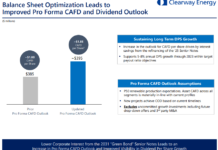By Bridget Boulle and Sean Kidney
Helping to push along the green muni space, the New York State Environmental Facilities Corp (EFC), rated AAA, has issued a USD 213 million green / water bond. There were 30 bookrunners on this bond with JP Morgan and LOOP Capital Partners co-leads – see prospectus.
The proceeds will be used to provide financial assistance to local governments to finance and refinance drinking water projects as well as to refund certain bonds previously issued. They expect to support 128 drinking water and wastewater infrastructure projects across the State.
Qualifying projects will be chosen based on their adherence to various state water and pollution legislation. Although the third party verification was not supplied, EFC promised to post semi-annual updates regarding such projects on their website.
Water is a complex area for green bonds as projects can have conflicting environmental and social outcomes. For example, the provision of clean water has obvious social benefits, but there are lots of good and bad choices that can be made towards that end. Water-provision investments can range from building a new reservoir and long aqueducts for transporting water, to reducing pipeline leaks (which can be vast in old and leaky city systems) and introducing better demand management measures.
The wrong decisions can end up over-using limited water resources in areas beginning to suffer decreased or more volatile rainfall as a result of climate change – and can lead to spikes in energy consumption just as we need to cut back to reduce emissions. Water infrastructure is a huge consumer of electricity – for example 17% of California’s electricity is used to shift water around the State. Yes, that’s right, 17%!
Water investments that don’t take into account climate and energy issues can end up being positively harmful, even as they deliver nice clean water.
From a creditworthiness perspective, as our friends at Ceres have shown, the level of climate-preparedness in water utility and water-dependent companies should be seen as a key risk signal.
That means it would be foolish to see water projects as green by default. At minimum investors should be asking for evidence that asset management and capital expenditure plans have robust climate adaptation and mitigation thinking behind them.
The good news is that we know New York has done this! It makes me love New York. For EFC’s next bond we would ask that relevant plans be specifically linked to the projects in the bond.
On the broader issue of being able to better recognize good and not so good water investments from a climate change perspective, we’re working with Ceres, the World Resources Institute and CDP to make it easier for investors by developing clear criteria for water related investments. They will become part of the Climate Bonds Standard.
Bridget Boulle is Program Manager and Sean Kidney is Chair of the Climate Bonds Initiative, an “investor-focused” not-for-profit promoting long-term debt models to fund a rapid, global transition to a low-carbon economy.








